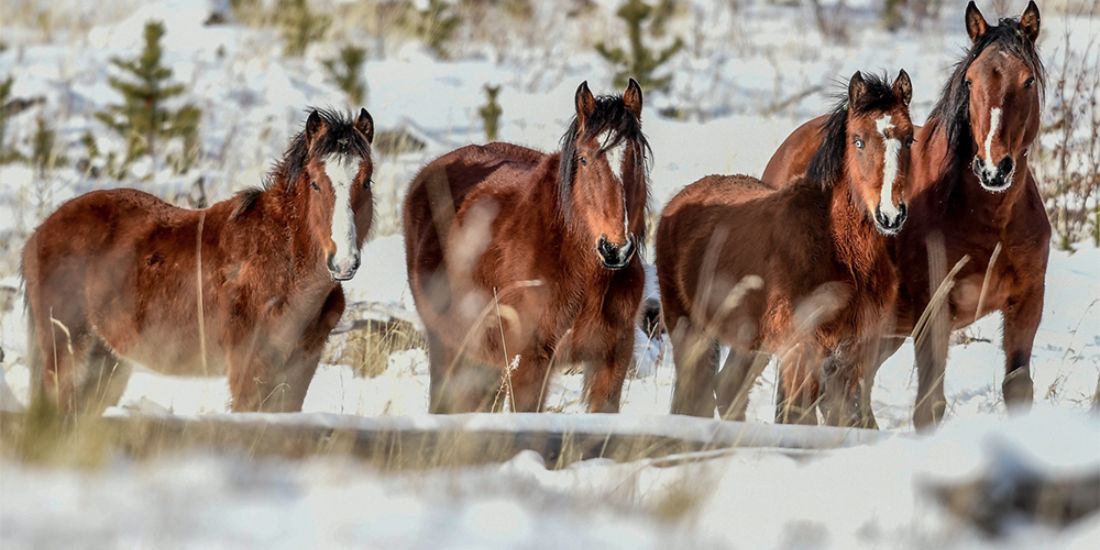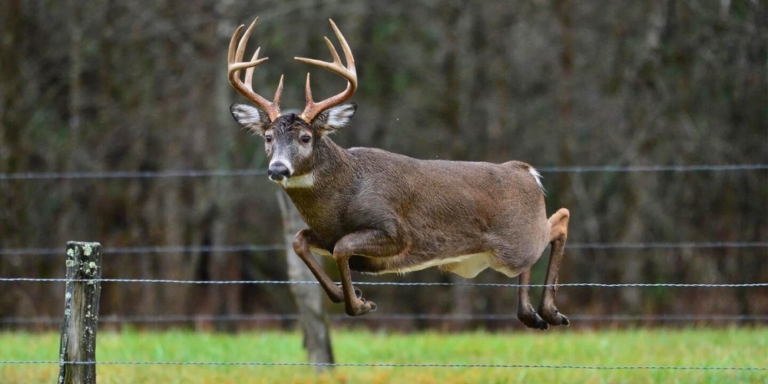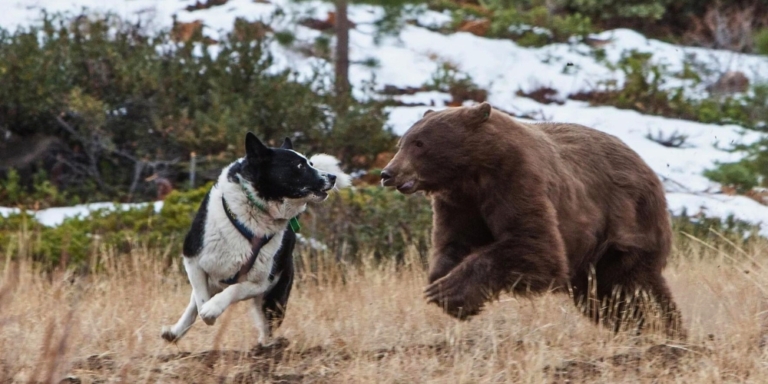The history of wild horses in North America runs deep, and it’s a revival story that embodies the enduring spirit of Alberta’s “Wildies” to a T.
Wildies is the nickname given to the wild horses that roam in the foothills west of Sundre. The Wildies have become an integral part of the Rockies, not only for tourists to view but also as part of the ecosystem of the eastern slopes.
People travel from all over North America for a chance to see actual “wild” horses. Some are fans of Heartland, which tugs at our heartstrings virtually every season with plotlines about wild herds.
But why are most of the wild horses that live in Alberta found in the foothills near Sundre? And how did the Wildies get there?
First, a wee history lesson.
A Second Chance for a Prehistoric Lineage
Lacking any equine presence for 10 thousand years, horses were led north into Alberta’s grasslands in the 1720s. They might have seemed like a foreign presence, but they were coming home.

Ancestors of the modern-day horse first originated in what is now the Canadian and American prairies about 56 million years ago. They were just 4-5 hands tall and, overall, barely resembled anything we’d associate with modern horses!
However, evolution did its thing. About 4.5 million years ago, Equus—the genus to which all modern equines, including horses and zebras, belong, was born and flourished from North to South America. They even crossed the Bering land bridge into Asia and moved to populate Europe and Africa.
But then, about 10,000 years ago in North America, Equus suddenly vanished. Scientists are still unsure precisely what led to its demise in its native territory. They speculate it could have been disease, human hunting, and climate change.
Whatever the case, when the Spanish reintroduced horses to the Americas – it was the horses’ second chance.
In the foothills of the Rockies, they took full advantage of that chance.
From Domestication to Feral Freedom
While we may refer to them as Wildies, a more accurate term for them would be feral., These ‘wild’ horses are descendants of once domesticated horses that belonged to both Indigenous and settler populations in Alberta.

The introduction of horses dramatically transformed life on the plains. Indigenous groups like the Blackfoot and Assiniboine became skilled horseback riders; these four-legged animals became integral to their way of life.
Writing-on-Stone Provincial Park in southern Alberta, home to one of North America’s largest rock art collections, features depictions of domestic and feral horses dating back 300 years.
Some of the earliest wild horse herds were likely formed from the stock of Indigenous peoples.
In 1807, explorer David Thompson reported seeing wild horses near the headwaters of the Columbia River, attributing their presence to the loss of horses from local First Nations herds.
Alberta and British Columbia continued to grow with settlements. Industries such as ranching, mining, and logging operations used horses. These operations either lost horses or deliberately released them, contributing to the growth of the wild horse population.
Because of the many different origins of the Wildies, they’re extremely genetically diverse.
Survival of the Fittest
The Wildies’ genetic diversity is a tapestry woven from various horse lineages. Their earliest ancestors had Spanish Mustang origins, with a hint of Andalusian heritage.

The arrival of the Canadian Pacific Railway in the late 1800s introduced heavier stock, like Percherons and Belgians, contributing to the Wildies’ distinct features, such as feathered feet and a sturdy build.
Horses let loose in the early 1900s included breeds like Thoroughbred, Irish Hunter, and Quarter Horse.
An account from the 1920s tells of a rancher in the Ghost watershed west of Calgary who aimed to raise a thousand head of high-quality bloodstock of various lineages intended for the war effort. But the horses never made it overseas and were set free when the war ended.
The result is a remarkable population. Bob Henderson, founder of WHOAS (Wild Horses of Alberta Society), says the Wildies embody the best traits of all these breeds and are uniquely suited to Alberta.
“These wild horses are adapted for the environment, very much so. They’re smaller than a domestic horse, have bigger feet, and have superior intelligence because they have to survive with their smarts.”
Why Sundre?
There are many reasons why wild horses mainly congregate outside Sundre. The main factor is that the area is the ideal environment, with plenty of open meadow grazing areas bordering protective forests, providing food and shelter.
Because of their concentrated settlement in the area, Sundre has also bred guardian angels of the wild horses.
For the last few hundred years, the Wildies have survived an unrelenting onslaught of poachers, hunters, cattle farmers, kill buyers, and government land expansion projects.
But now they have extra help beyond their natural smarts and genetics with the protective efforts of Help Alberta Wildies Society (HAWS), founded eight years ago by Darrell Glover and his partner Barb Robinson.
The organization relentlessly documents Wildie’s behaviour and activities through trail cams and aerial and weekly drone fly-overs piloted by Glover himself.
They upload all their footage to Facebook so their 415,000 followers can follow along with the Wildies’ adventures.
Controversial Herd Size
Not only has their social media network generated a dedicated following of advocates for the horses, but it also allows the organization to confirm or contradict government horse survey numbers.

With the latest 2023 survey, the government says there are now 969 feral horses in the Sundre zone, compared to 642 last year.
HAWS says this is not a realistic jump in population from one year to the next, and the inflated number is due to the government increasing their survey zone by 500km, throwing previous numbers out of context.
“However, they refuse to amend their 2023 population count report that makes it appear there has been a massive increase in the wild horse population in the Sundre EMZ,” Glover told Okotoks Online.
“Not only are they misleading the public, but by arbitrarily expanding their survey area to inflate the numbers, they’re purposefully setting themselves up to justify a future cull or contraception program to bring those numbers down. That’s just not right nor ethical, and the public needs to know.”
While governments may not be the biggest supporters of the Wildies, they certainly have many caring locals on their side.
The Wildies’ captivating story will continue to unfold. They may not be considered a native species on paper, but how they have thrived in Alberta is a testament to the enduring spirit of a prehistoric lineage that returned to its ancestral home.
Their future may be uncertain. Still, one thing remains clear: these remarkable feral horses, with their diverse origins, embody the resilience and adaptability that define Alberta’s untamed landscapes.
The Wildies serve as living symbols of a history that spans millions of years.





